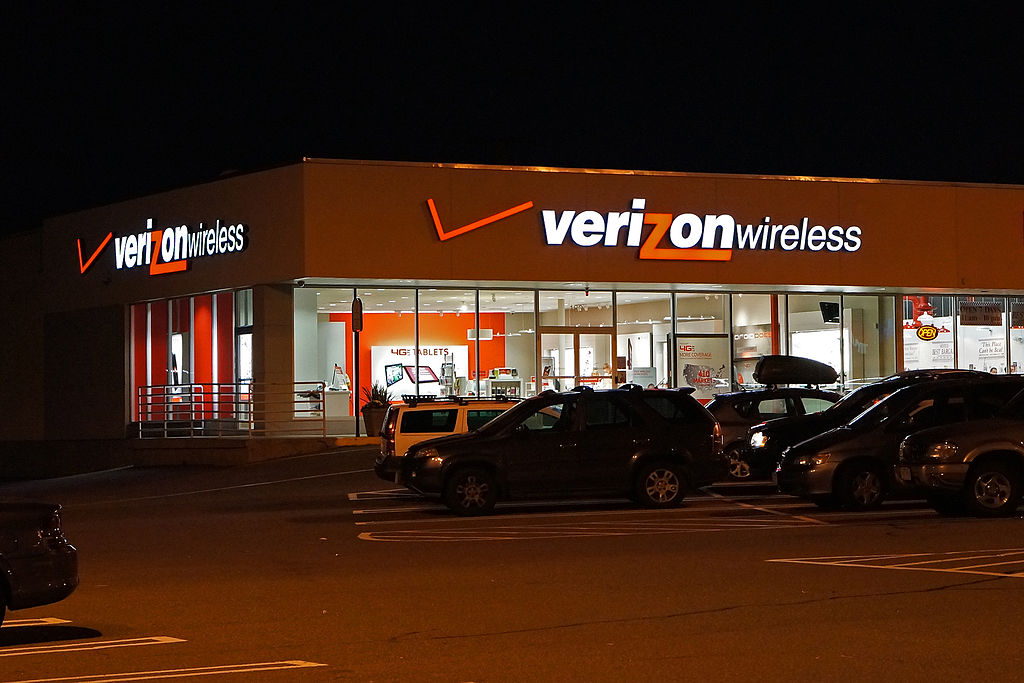
Verizon is one of the few companies out there that has essentially removed the term “roaming” from their site and their plans. It’s a good strategy, so people don’t throw up red flags. What Verizon calls it is the, “Pay as you go” option. When it comes to roaming on Verizon, the first thing that you would need to know is that Verizon doesn’t call it roaming. The second issue is that since they don’t call it roaming per se there are a couple of other charges that you need to be aware of. Even if you activate an international plan. You can incur in roll-over costs from those international plans as well!
The first things that you need to know about roaming on Verizon are what those costs are actually called! There is no reason to sugarcoat it at this point. Verizon still has some of those old-school sneaky practices that phone companies would do. We wouldn’t say that those old-school practices of trying to hide those extra costs are a sign that you should stay clear of Verizon. As a company, they offer a ton of benefits, and we can clearly see why they have such a strong client base. That being said, the article just wants to make sure that as a Verizon customer, you’re aware of the fees that could be coming your way. Particularly if you don’t have a good strategy on how to get coverage abroad. Verizon actually offers multiple options to have coverage abroad and keep your regular number. We are going to be tackling these right here!
- Roaming on Verizon Fees To Be On The Lookout For
- How Much Can I Expect To Pay in “Pay as You Go”
- Which International Plan Verizon Offers Is Good?
- How Roaming on Verizon Compares To Other Main Providers
- Monitor Your Data Usage
- The Local SIM Card Option
- Where You Travel Matters
Roaming on Verizon Fees To Be On The Lookout For
Any time that you find yourself in the Pay as You Go scheme, you’re in roaming. One of the biggest problems with any phone company is that they made not even tell you that you’re in roaming. Roaming on Verizon is no different. There are some clues that you need to pick up, though. When you arrive in a new country, your phone will most likely offer you the option of buying a travel pass. If you don’t buy the travel pass, and you continue to use your phone, guess what you’ll get charged with? Roaming of course! Again, as we mentioned, Verizon is going to call this the Pay as You Go scheme.
These are the exact fees that you can expect to pay on this pay scheme:
| Canada, MexicoNorthern MarianaIslands and Guam | 130+ Countries | 80+ Countries | |
| Talk | $0.99/min | $1.79/min | $2.99/min |
| Text | $0.50 sent$0.05 received | ||
| Multimedia Messaging | $0.25 sent$0.25 received | ||
| Data | $2.05/MB |
Source: https://www.verizon.com/solutions-and-services/international-travel/
These are the fees that you are going to have to pay if you are out of the country without a travel pass or without coverage from your regular plan. A lot of people end up being hit with these rates when they are not careful with the amount of data that they are using abroad. Even on “unlimited” plans, there are certain limits when it comes to international travel. We find that a lot of folks have a tough time explaining that concept to their kids. They are the ones that rack up these massive fees the most when traveling.
How Much Can I Expect To Pay in “Pay as You Go”
Going with the Pay as You Go plan can be a wild ride. Sure, if you send a couple of texts then you may be fine. The thing is, you can’t be using any data at all when you do this. Almost impossible to actually complete this task. 2 dollars and change per MB is literally insane! According to our pals at Nerd Wallet, an average person in the US uses about 2 to 5 GB per month. Let’s take an easy route here and say that you are using this payment scheme for one week abroad and you use 1GB of data. Simple conversion here, 1 GB equals 1000 MB. Remember you have to pay $2.05 per MB. You could be looking at a charge of over 2000 dollars just on data alone.
We just talked about this, but it’s super important to reiterate it if you want to avoid this tragic outcome. Monitor your data usage abroad. The Pay as You Go scale is not one that you want to find yourself. The biggest issue is that you could be thinking I’ll make a couple of calls or make a couple of texts and pay 5 dollars. You could turn your phone on add make sure that all of the apps that you have are not consuming data in the background. Still, being extra careful, you can get home to a hefty bill. The biggest issue with that is, fighting with Verizon on roaming on Verizon usually doesn’t end well!
Which International Plan Verizon Offers Is Good?

There are actually plenty of positives on this front. The thing is, you need to make sure that you chose a method to get coverage abroad before you leave to your destination. Otherwise, it’s way more likely that at some point you’ll get hit with the pay as you go rates. If that happens, you can be toast real quickly. Actually, Verizon pretty much offers the same type of international coverage on each of the unlimited plans that they offer. For example, most of their plans are going to give you data usage in Mexico and Canada. Really what you have to worry about is speed. You can navigate on most plans with unlimited data in Mexico or Canada. But you’ll only get 4G or 5G speeds for the first 0.5GB that you use while abroad.
When you don’t have the automatic coverage, your phone is going to send you a message to have you activate a travel pass to get coverage. This is going to happen pretty much when you travel anywhere that’s not Mexico or Canada. As we mentioned, that downtime before you activate the travel pass could be where you’re really at risk of paying the Pay as You Go rate. On most plans, you’re going to be able to buy travel passes ahead of time. If you can do that, it can be an option to avoid roaming on Verizon costs. If not, buy the travel pass when you’re connected to a Wi-Fi network.
Pretty much all the plans on Verizon are going to allow you to purchase a travel pass. Even some of the premium prepaid plans are going to have that option available for you. If you’re on a prepaid plan, you need to make sure that you have enough cash on your Verizon account to be able to purchase the pass. For most countries, the cost is going to be 10 dollars a day. Notice that we don’t talk about the monthly travel pass option that Verizon offers. It’s not that we are omitting it because we don’t know about it. It’s just not good. If you’re going to be traveling for a month the local SIM card option is the way to go. Paying an extra hundred dollars besides your regular fee per line is not a good plan. Plus, the coverage that option provides is minimal.
How Roaming on Verizon Compares To Other Main Providers

Talk rates when roaming on Verizon are pretty much the same as you would pay with a provider like AT&T. T-Mobile is going to allow you to pay a little less. Going with around 25 cents a call. Where Verizon really goes off the rails is with the data costs. Roaming on Verizon when it comes to data is not something that you ever want to be doing. There’s really not a nice way to say that. We’ve already talked about how much you can expect to pay if you use up even just a little data on these rates.
Should you change your service provider just because one has better international rates? We wouldn’t necessarily advise that you do that. At the end of the day, you’ll only be able to use Verizon, T-Mobile, and AT&T phones abroad for around 30 days. If you’re going on a longer trip, like a month or so long you’ll have to find other ways to get coverage. Having said this Verizon rates for international coverage are some of the most expensive on the market. If you’re a Verizon subscriber is always a good idea to look for other ways to get coverage abroad.
Roaming On Verizon : Monitor Your Data Usage
The best thing that you can do to make sure that you’re not hit with roaming on Verizon rates is to monitor your data usage. Just because you have coverage doesn’t mean that the coverage is within the limits of your plan. Even if you add a travel pass there’s a possibility of getting hit with roaming rates in some gray areas. If you move out of the coverage area, for example. Also, if you use any type of data or you call or text before you activate the daily pass, you could be looking at a problem.
There are other benefits to monitor your data usage besides avoiding those hefty rates. For example, on the day pass you’re only going to have 0.5GB of 5G coverage. From there, the speed of your coverage is going to drop off. Yes, even when you’re paying extra cash for it! If there are specific things that you want to do with high speed data that day, make sure you’re not wasting on Youtube videos. Maybe the most important thing that you need to watch out for is to ensure that apps are not using data. A lot of times apps like Instagram and YouTube could be using a ton of data even when you’re not looking at them directly. It’s always a good idea to reduce your data usage. Otherwise, you’re going to end up paying more money for coverage!
The Local SIM Card Option
People usually want to take their own phone abroad because they want to keep their regular number. The biggest problem that you’re going to have with a local SIM card is that inserting one could mean that you are putting your phone number offline. Now, this is something that is becoming less of an issue with dual-SIM phones. With a local SIM card, you’re more likely to be able to get high speed coverage at a lower price. For most countries, 30 or 40 dollars tops is going to get you a ton of high speed data that you can use for monthly coverage.
For comparison for that rate you’ll be able to buy 3 or 4 days worth of the travel pass. If you wanted to get the monthly coverage from Verizon, you’d have to pay a 100 dollar fee. You’d be getting very limited data on this plan. The only real benefit is that you’ll be able to use your own phone number. With a local SIM card, though, you can get more data and usually better coverage. Literally, all that you would have to do is give your most important contacts that number.
Another one of the main benefits that you can obtain when you go with a local SIM card is that you won’t have to pay roaming rates. If your regular phone is virtually offline, then there is no way that you’re going to be charged with roaming on Verizon fees. If you have a dual-SIM phone, make sure that you have the local SIM card as the only one actively getting you coverage. Otherwise, even with a local SIM card, you can get hit with some of those roaming costs.
Where You Travel Matters

There area a couple of reasons why where you travel matters. We’ve mentioned that there are some countries that are outside of the list of countries where you can potentially get coverage. In those cases, if you’re able to find some type of signal, that means you’ll be paying the roaming on Verizon rates for your whole stay. That’s probably not something that you want. There are also countries where getting a local SIM card that can give you monthly coverage is going to be extremely cheap. Like 10 or 20 dollars cheap! Therefore, if you travel to some of these countries, the local SIM card option may be more appealing.
Mexico and Canada are going to operate under different price policies also. Those are two countries were taking your regular plan may not be the worst option. In fact, in Verizon most plans, even prepaid ones, have some type of coverage option in Mexico and Canada. Still, in these countries, you really want to make sure that you don’t overuse coverage. There is a possibility of getting hit with some of these roaming rates!